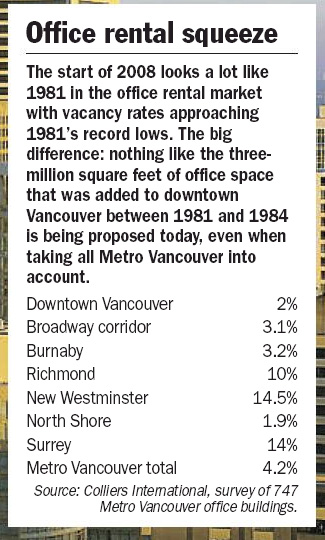Nothing here to oink about
Mark Laba
Province

Alison McKinnon with a Reuben as Bonji hams it up at the Greedy Pig. Photograph by : Nick Procaylo, The Province
The Greedy Pig
Where: 307 W. Cordova St.
Payment/reservations: Major credit cards, 604-669-4991
Drinks: Fully licensed
Hours: Noon-midnight Tuesday to Saturday. Closed Sunday and Monday
Whomever invented the panini and fancy grilled artisan sandwich should have his head stuck in a panini press. It’s not that I don’t like the things, it’s just that the panini or variations thereof — at least the North-American version that’s going viral across the nation — seems to be a diabolical plot for reducing the amount of stuff you have to put in a sandwich. Grill the sucker flat, tell folks it’s European and presto, fancy sandwich, fancy price but about as satisfying as tofu baloney. Or a candy bar made with carob beans. Or a Louisville Slugger to the back of the knees.
Likewise the charcuterie craze. I’m a huge fan of top-of-the-line meats and cheeses but these little sampler platters popping up in newer restaurants across the city, offered up like precious cold-cuts and curdled mould diamonds, are losing their original peasant roots. Barely enough on the plate to fill a garden gnome’s belly and most joints will ding you 15 to 20 smackers for the stuff, gussying it up with a little dollop of fruit compote to alleviate your fear that your money just took flight and left barely a trace. It would all be well and good, I think, if we didn’t know where most of these meats and cheeses come from, since it usually says so on the menu. More satisfying and economical to go to the store in question and throw your own charcuterie party.
Which leads me to The Greedy Pig. With a name like this, well, you’re bound to expect certain things. I knew walking in with Ricky Roulette, no stranger to greed himself, that the place’s forte was artisan sandwiches and cheese and meat but I imagined this trough would still be satisfying.
The joint’s hip to the nines with its kind of chic bric-a-brac furnishings, a post-modern mix of industrial piping, vinyl seat covering, exposed brickwork and vintage fixings. It begs for people with tattoos to fill its space.
“Did I tell you my 90-year-old grandmother thinks I stole her silverware,” Ricky Roulette told me over a couple of beers.
“Did you?”
“Geez, what th’hell do you think I am?”
“A greedy pig, perhaps,” I replied. “Albeit one with hairplugs and gambling debts.”
On that note, we began with a stink of another kind. The Ewe Stink Roquefort cheese dish ($9) arrived with a decent block of the blue-veined stuff, a pear-and-rum compote and thin slices of good bread. The best deal of the night and the Roquefort had the proper stink of Godzilla’s athletic cup after a busy day demolishing Japanese cities.
Next up, some fancypants sandwiches. I picked the Oyama roast-beef sandwich ($13), described as their version of Beef Wellington with a foie-gras truffle parfait and porcini mushrooms. Ricky Roulette opted for the ratatouille shlimazel ($10) or as he told the waitress, “I’ll have the one with the buffalo meat.”
“Sorry sir, that’s buffalo mozzarella.”
“You mean there’s no buffalo meat on it?”
“No sir, it’s a type of cheese.”
“Well I’ll be damned.” He took it anyway. Both came looking a hell of a lot like paninis. Grilled flat so the promised baguette looked like a hit-and-run accident and the porcini mushrooms on mine appeared to be three small pieces of fungus that looked like bugs that had hit a windshield at high speed. The foie-gras parfait was undetectable. Roulette’s ratatouille was good but equally sparse. Also tried the pulled-pork sandwich that, at least, wasn’t grilled but was tiny and uninspiring. The cocktails here, though, are fine creations, from the Roughrider to the George Thorogood with its one-bourbon-one-scotch-one-beer theme. As for this pig, he appears far skinnier than his name.
THE BOTTOM LINE:
I’ll huff and puff and blow your sandwich down.
RATINGS: Food: B- Service: B+ Atmosphere: B+
© The Vancouver Province 2008






